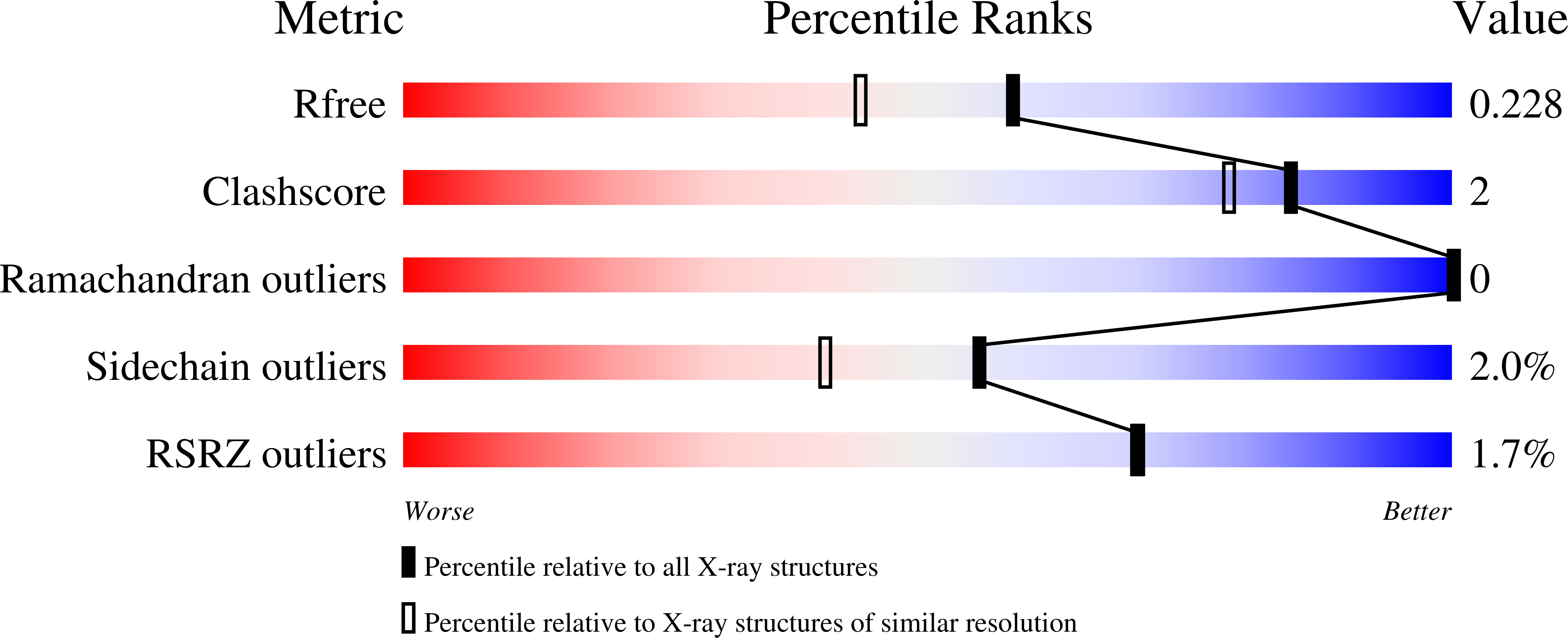LucY: A Versatile New Fluorescent Reporter Protein.
Auldridge, M.E., Cao, H., Sen, S., Franz, L.P., Bingman, C.A., Yennamalli, R.M., Phillips, G.N., Mead, D., Steinmetz, E.J.(2015) PLoS One 10: e0124272-e0124272
- PubMed: 25906065
- DOI: https://doi.org/10.1371/journal.pone.0124272
- Primary Citation of Related Structures:
4PYT - PubMed Abstract:
We report on the discovery, isolation, and use of a novel yellow fluorescent protein. Lucigen Yellow (LucY) binds one FAD molecule within its core, thus shielding it from water and maintaining its structure so that fluorescence is 10-fold higher than freely soluble FAD. LucY displays excitation and emission spectra characteristic of FAD, with 3 excitation peaks at 276 nm, 377 nm, and 460 nm and a single emission peak at 530 nm. These excitation and emission maxima provide the large Stokes shift beneficial to fluorescence experimentation. LucY belongs to the MurB family of UDP-N-acetylenolpyruvylglucosamine reductases. The high resolution crystal structure shows that in contrast to other structurally resolved MurB enzymes, LucY does not contain a potentially quenching aromatic residue near the FAD isoalloxazine ring, which may explain its increased fluorescence over related proteins. Using E. coli as a system in which to develop LucY as a reporter, we show that it is amenable to circular permutation and use as a reporter of protein-protein interaction. Fragmentation between its distinct domains renders LucY non-fluorescent, but fluorescence can be partially restored by fusion of the fragments to interacting protein domains. Thus, LucY may find application in Protein-fragment Complementation Assays for evaluating protein-protein interactions.
Organizational Affiliation:
Lucigen Corp., Middleton, WI, United States of America.





















